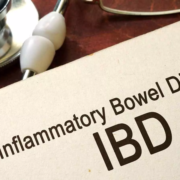Low-Dose Aspirin may increase Risk of Anaemia in Older Adults: Study

Low-Dose Aspirin may increase Risk of Anaemia in Older Adults suggests a study published in the European Heart Journal.
A study was done to assess the risk of anaemia among low-dose aspirin (LDA) exposure in Danish older individuals in a real-world setting. Population based-cohort study conducted using Danish registers. The study population included older individuals (≥65 years) exposed to LDA between 2008 and 2013 for primary or secondary prevention of cardiovascular events. Over a five-year follow-up, outcomes included anaemia incidence based on haemoglobin values and hematinic deficiency incidence based on antianemic prescriptions.
Results: Among the 313 508 individuals included in the study population, those exposed to LDA (n = 59 869, 19.1%) had an incidence of hematinic deficiency determined by the use of antianemic treatment of 9.6%, with an incidence rate ratio of 9.11 (95% Confidence Interval, CI: 8.81-9.41) when compared to non-users of LDA (n = 253 639, 80.9%), who had an incidence of 3.7%. Anaemia determined by haemoglobin value measurements was observed in 5.9% of those exposed to LDA, with an incidence rate ratio of 7.89 (95% CI: 7.58-8.21) when compared to non-users of LDA. Approximately one in five individuals (n = 2 422, 21.5%) who experienced anaemia also experienced bleeding. Severe anaemia was observed in 1.3% of those exposed to LDA compared to 0.6% of those not exposed. Among the exposed, the reduction in haemoglobin and ferritin levels was associated with the severity of anaemia. These findings indicate that in a real-world setting, anaemia with LDA can occur in 6 to 10 older individuals out of every 100 LDA users during the first 5 years of treatment.
Reference:
Maria Antonietta Barbieri, Dilsad Simay Peker, Mohsen Gamal Saad Askar, Vera Battini, Andrea Abate, Carla Carnovale, Emilio Clementi, Richard Ofori-Asenso, Edoardo Spina, Manan Pareek, Kristian Kragholm, Christian Torp-Pedersen, Maurizio Sessa, Low-Dose Aspirin and Risk of Anaemia in Older Adults: Insights from a Danish Register-based Cohort Study, European Heart Journal – Quality of Care and Clinical Outcomes, 2024;, qcae089, https://doi.org/10.1093/ehjqcco/qcae089
Keywords:
Low-Dose, Aspirin, increase, Risk, Anaemia, Older, Adults, Study, Maria Antonietta Barbieri, Dilsad Simay Peker, Mohsen Gamal Saad Askar, Vera Battini, Andrea Abate, Carla Carnovale, Emilio Clementi, Richard Ofori-Asenso, Edoardo Spina, Manan Pareek, Kristian Kragholm
Powered by WPeMatico




















